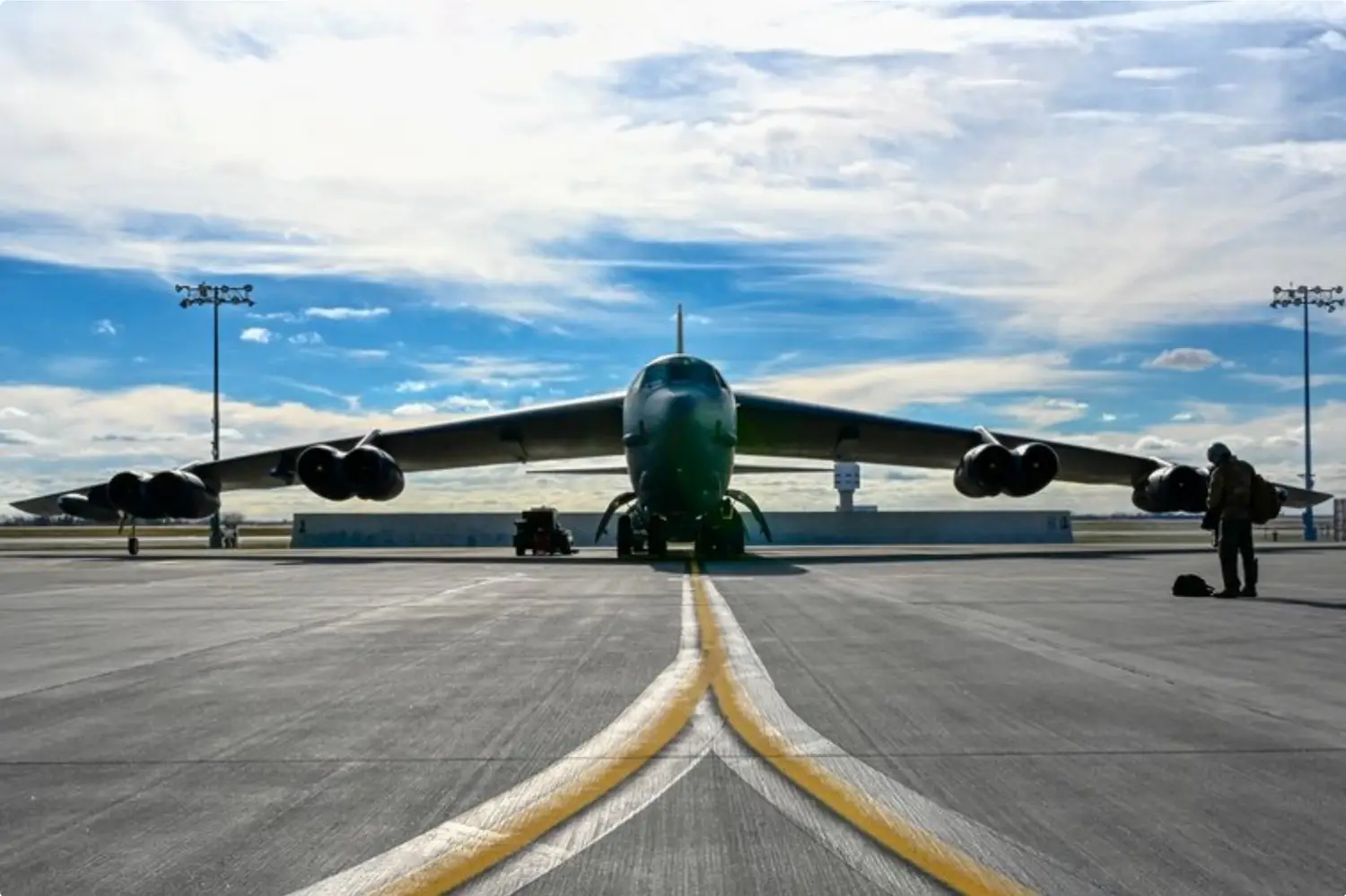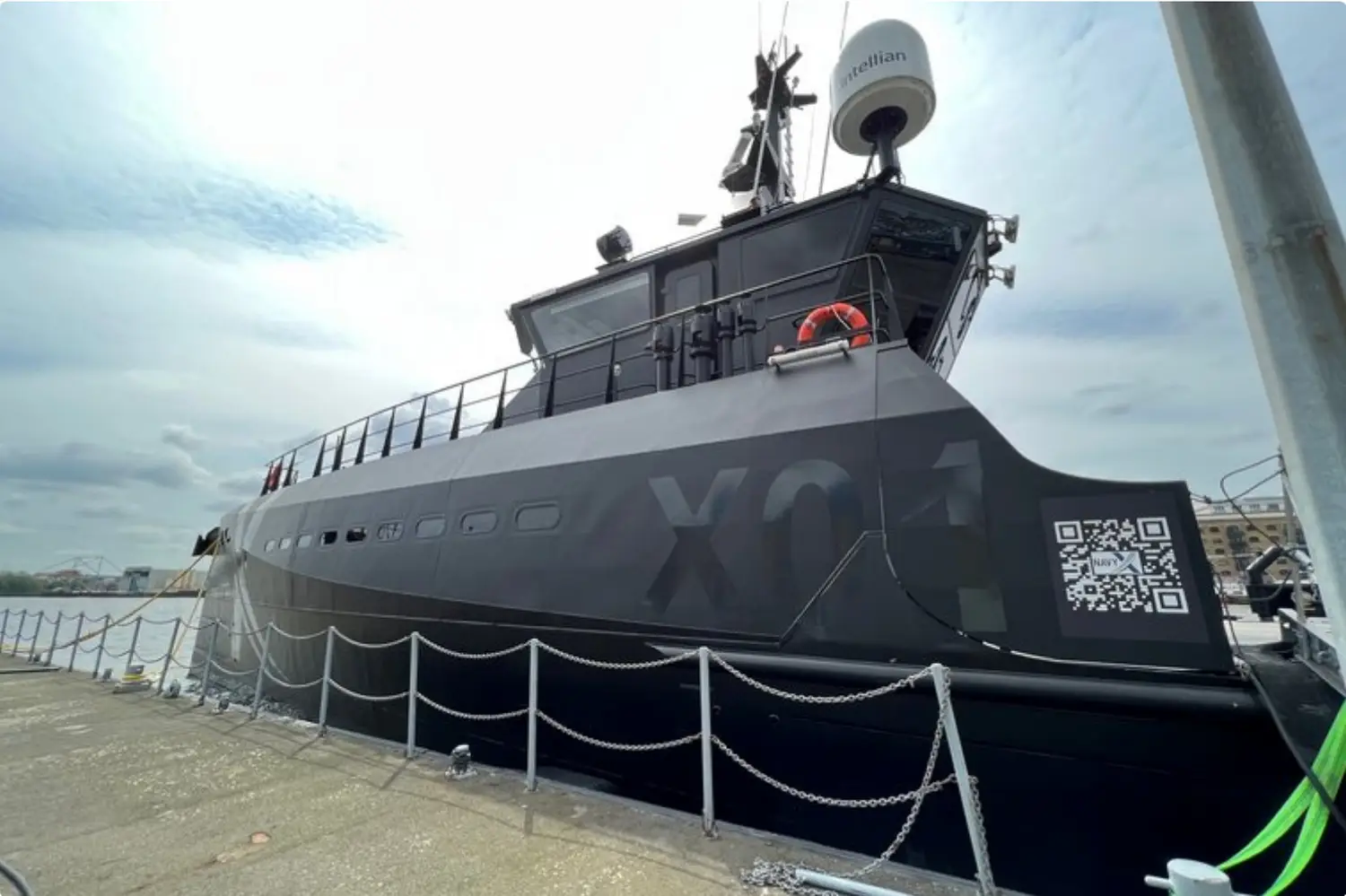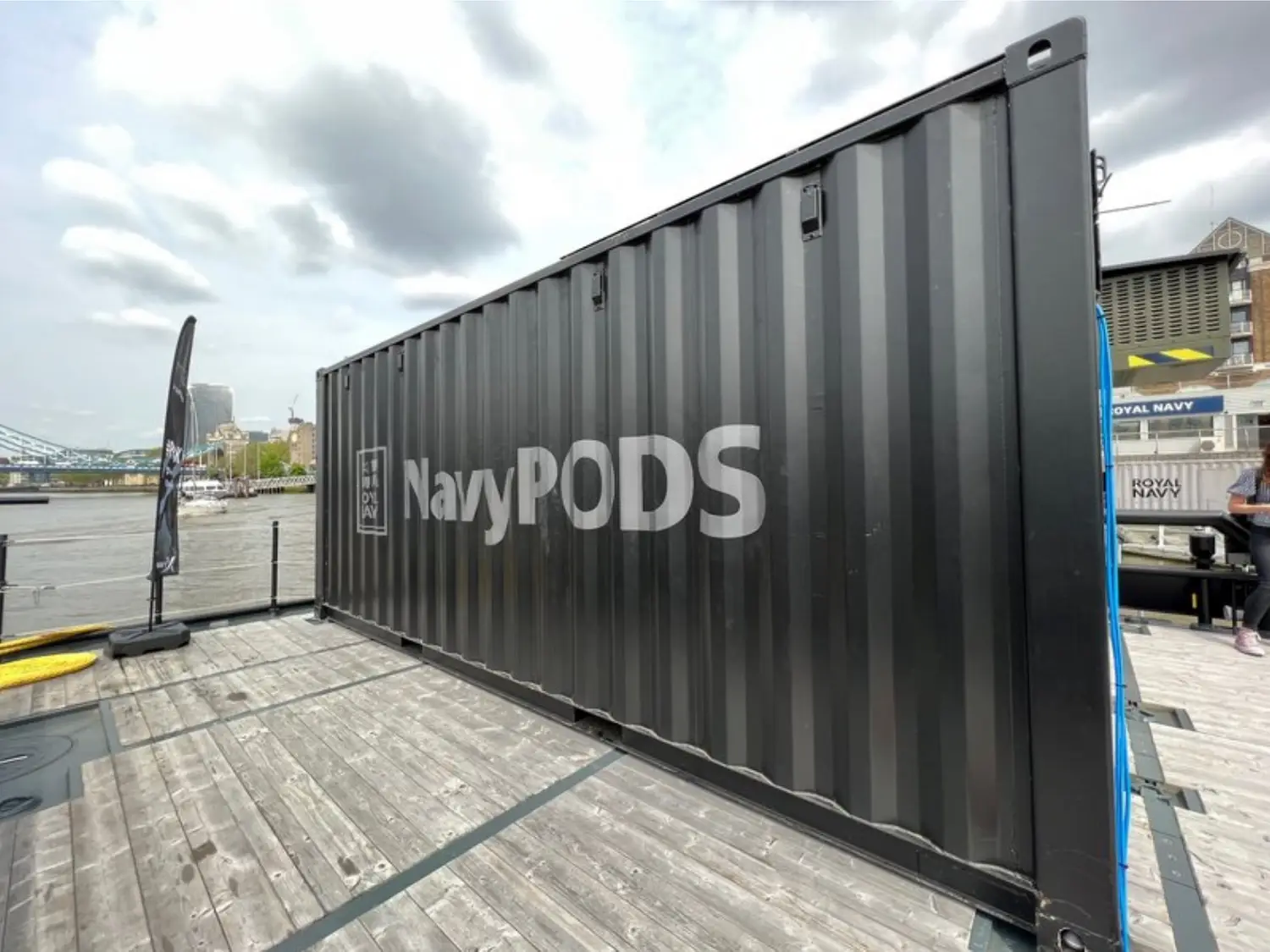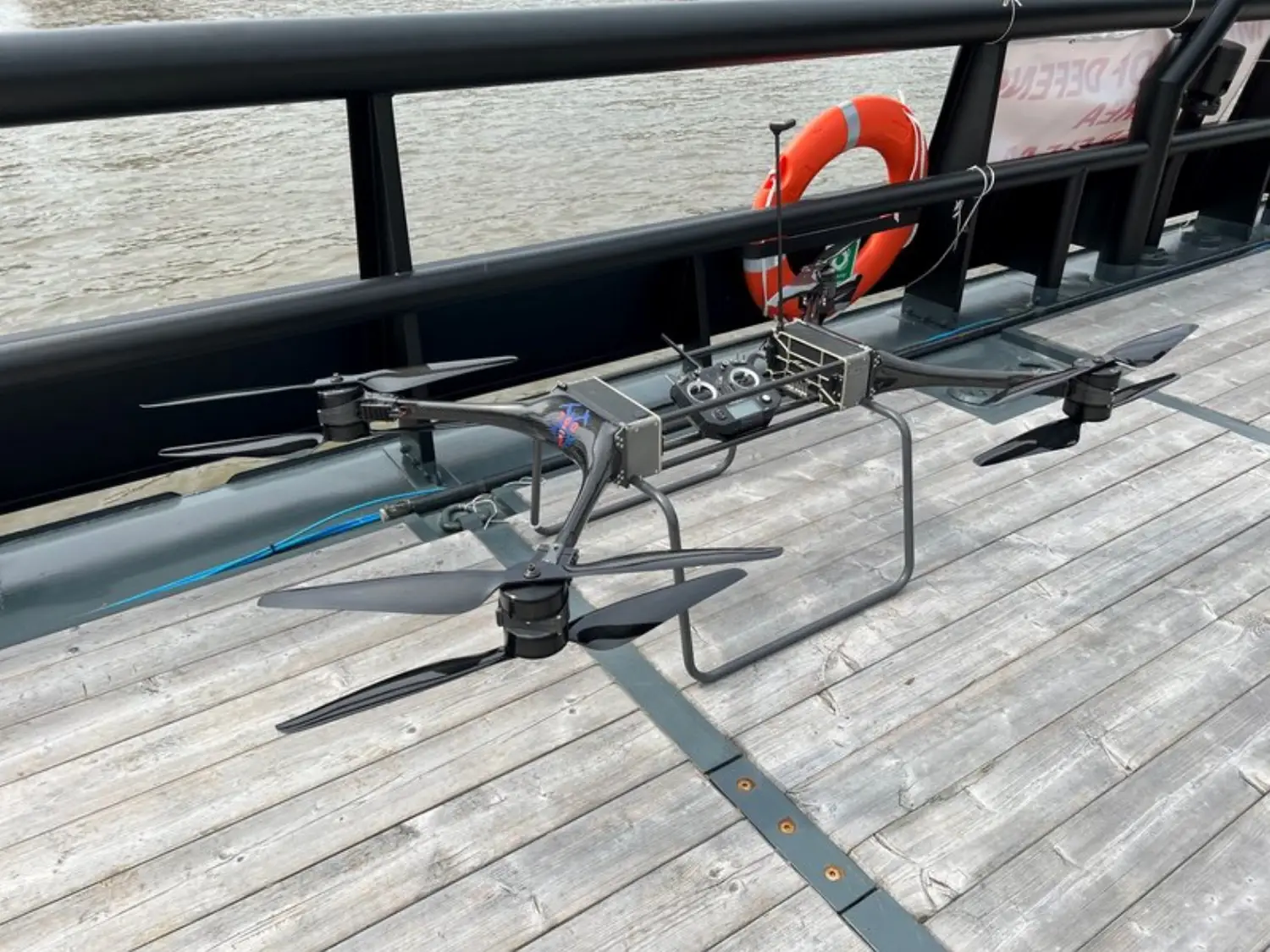
REPORT HOME > News
JUNE 2023 | technology report | RADAR & EW
by Norbert Neumann
The radar upgrade is part of the wider B-52 modernisation programme that aims to keep the Stratofortress in the air until 2050 and beyond.
Above: Boeing has begun low-rate initial production of the new radar system for operational testing and evaluation. (Photo: US DoD)
Boeing has received the first USAF B-52 Stratofortress to begin upgrades as part of the Radar Modernization Program (RMP).
The company said the programme will give the heavy bomber ‘fighter-like’ radar capabilities by increasing navigation accuracy, targeting and tracking.
The new radar system will also provide new, high-resolution mapping and will be able to engage multiple targets simultaneously.
‘The B-52 brings unique, critical capabilities to the US Air Force as they move to a future two-bomber platform strategy,’ said Jennifer Wong, director of bomber programmes at Boeing.
‘By modernising the B-52 radar, we’re increasing the relevancy of the aircraft for the warfighter for close air support or strategic attack.’
Boeing began low-rate initial production of the new radar system for operational testing and evaluation following the on-schedule completion of the radar programme critical design review.
Work on B-52 modernisation takes place at Boeing sites in Oklahoma City and San Antonio.
RMP upgrades include a new, wide-band radome on the aircraft’s nose; two high-definition, touch-screen, large-area displays; two display sensor system processors that will connect the radar with other B-52 systems; two hand controllers and a modern active electronically scanned array radar.
The Stratofortress will go through a major modernisation programme to keep it in the air until at least 2050.
Other elements upgraded on the aircraft will include a new Rolls-Royce engine under the Commercial Engine Replacement Programme (CERP), James Detwiler, VP of Boeing mobility, surveillance & bombers business development told reporters in May during a press trip to the company’s St Louis facility.
Boeing will be responsible for integrating the engine on the airframe.
‘It will receive a more digital cockpit, a new electrical power generation capability, and, of course, any structural strengthening provision required to keep this aircraft operating for literally decades to come,’ Detwiler said.
Next article below > Royal Navy experiments ship Patrick Blackett gets into its stride
June 2023 | technology report | RADAR & Ew
by Harry Lye
Having already embarked two experimental capabilities and achieved certification, the UK RN's research ship XV Patrick Blackett is expanding the horizon for the navy's efforts to test and trial new technologies.
Above: XV Patrick Blackett alongside HMS President in London. (Photo: author)
Moored in London, the UK RN's XV Patrick Blackett – owned by its internal technology and lethality accelerator NavyX – is a Swiss Army knife for the navy in its efforts to test, trial and develop new technologies for the current and future fleet.
Speaking to Shephard from the bridge, CO Cdr Michael Hutchinson said the vessel recognised that the navy had struggled with having a dedicated platform for experimentation.
Before procuring the ship from Damen and fitting it out for trials and experimentation, the RN had trialled new capabilities onboard operational warships, which with pressing schedules, made finding time to do so a challenge.
RELATED ARTICLES
XV Patrick Blackett opens up broad range of experimentation possibilities, says RN
SEA nets Royal Navy in-service support contract
Royal Navy embarks on assessment phase to arm Type 31 frigates with Mk 41 VLS
Since arriving in the UK last July, the ship – set apart from other vessels by its black paint scheme – has already embarked two experiments, one looking at counter-UAS capabilities and another navy PODS capability showcased during the recent visit to London.
Above: XV Patrick Blackett's aft deck features a crane, hardpoints for securing containers and direct connection to a trials office. (Photo: author)
Adapted from a Damen 4008 Fast Crew Supply Ship, Patrick Blackett was fitted out by the navy for experimentation, with a dedicated trials office and a modular space with three screens for presenting experimentation results.
The ship has a large aft deck with hard points allowing containers to be secured directly to it. A crane is also fitted, allowing the vessel to launch and recover deployable systems.
Cabling can be directly run from the ship's deck to supply PODS with power, data and other required connections to the trials office.
The ship's company cited its small size as a benefit for trials, as changes can be quickly made without having to traverse a large warship while experiments are underway.
With a crew of just five, Patrick Blackett uses automation far more than other ships in the RN fleet – partly reflecting its commercial heritage. The vessel does not operate like a traditional RN asset, using civil rather than military navigation systems.
NavyX also seeks to leverage the development of autonomy from other platforms in its arsenal and insert it into Patrick Blackett. Future work could see the autonomy package from the Maritime Demonstrator For Operational eXperimentation (MADFOX) fitted to the experimental vessel.
To support experimentation, Patrick Blackett also has three server racks that, while not in use at the time of Shephard's visit could be used for trialling radio, computing and other equipment.
Hutchinson characterised the platform as uncomplex but added that what could be done with it was complex.
Above: A Navy pod embarked on XV Patrick Blackett. (Photo: author)
Reece Oliver, NavyX experiment plans team lead, described the organisation Patrick Blackett sits within as a well-thought-out, well-structured one, adding that its small size made it more innovative.
He added that with Patrick Blackett, the service was trying to build learning and take regulators with it for the benefit of experimentation.
Before embarking the current pod, Patrick Blackett was used for a C-UAS detection experiment, which lends itself towards the future trialling of other counter-drone equipment.
Oliver told Shephard that future sensor trials were planned that would lend themselves to the autonomous journey NavyX is pursuing. Rather than deciding what to do with what sensors, NavyX intends to explore what can be got out of sensors and how this can be combined for maximum effect.
The service is also looking at how best to integrate a recently contracted Saab Giraffe radar into Patrick Blackett. Under an award announced in early May, one Giraffe 1X has been procured for the XV.
Looking to the future, Patrick Blackett could appear at the upcoming NATO exercise REPMUS (Robotic Experimentation and Prototyping using Maritime Uncrewed Systems). However, NavyX is assessing whether the ship would be best served by this journey to Portugal or attending the upcoming DSEI defence show in London.
Patrick Blackett is NavyX-centric now. However, the plan is for the vessel to engage with wider organisations as its experimentation journey progresses.
When the current pod is removed from Patrick Blackett, the ship will take on a new experimentation package to continue its busy trials programme. Hutchinson told Shephard that the ship's programme is fluid, allowing it to respond to the maturity of technologies or insert new experiments when ideas present themselves.
Testing on the XV offers several benefits compared to lab or land trials by exposing equipment to fluctuating power levels, vibration, movement and salt water without impacting the RN's grey-hulled fleet operations.
The vessel could also be used to test capabilities against the RN's warships and operate with the wider fleet in its experimental role.
While the ship itself is certified, Lt Alex Ward of NavyX told Shephard that work continued to clear the deck for the operation of UAS.
On the ship's aft deck was a UAS from 700X Naval Air Squadron – based out of RNAS Culdrose. The quadcopter was only for display purposes but sits in the 25kg+ class of aircraft.
Future trials will almost certainly see the ship operate alongside uncrewed vehicles, including aerial, surface, and subsurface systems.
Above: A 700X Naval Air Squadron UAV on display on XV Patrick Blackett. (Photo: author)




